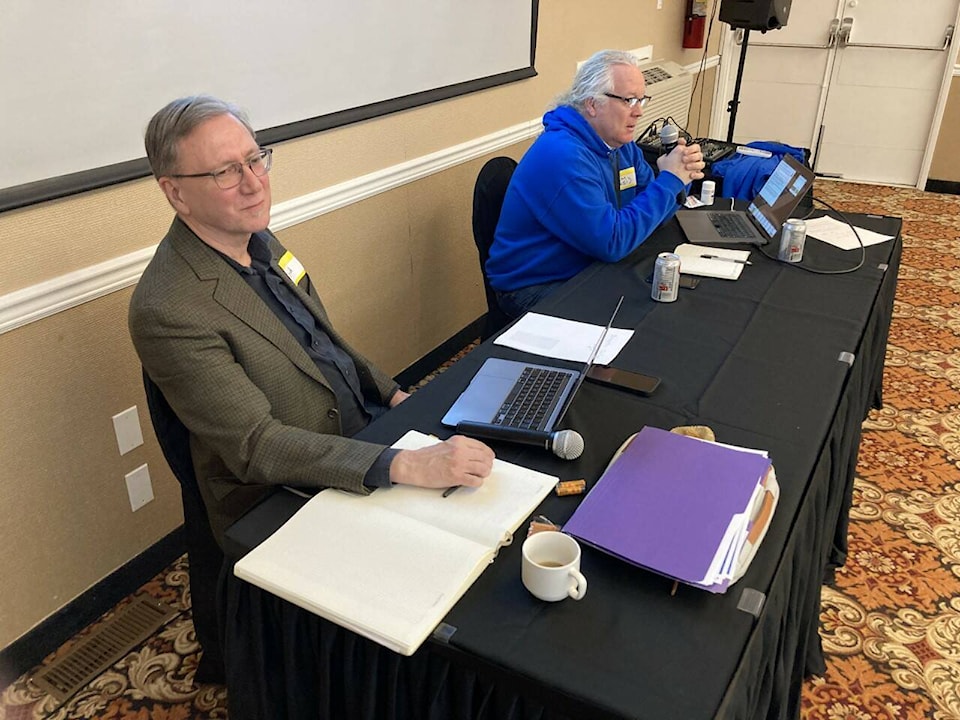To the editor:
Are you aware that Kitselas Geothermal Inc (KGI) and Shell are working toward harvesting the geothermal energy in the immediate vicinity of Mount Layton Hot Springs and Lakelse Lake? This was originally a project started by Borealis Geothermal of Calgary, who have since collaborated with the Kitselas Development Corporation.
At the KGI open house in March, Tim Thompson, chairman of Borealis Geothermal, told Lakelse residents, “You are surface rights holders and I’m a subsurface rights holder. I have a right in a strict and legal sense”.
Since then, the Surface Rights Board of BC has given permission for investigative assessments on the private Mount Layton Hot Springs property and the land adjacent to it from Lakelse Lodge Rd to Schulbuckhand (Scully) Creek. This was the Surface Rights Board’s first ever application requesting access to private land for geothermal resource development, and despite strong opposition from the hot springs owners, they granted it. This sets a serious precedent.
We need to question why this geothermal project is being proposed in close proximity to Lakelse Lake, the hot springs and nearby salmon rearing creeks and canals. This is an active flood plain abundant with wildlife including moose, kermode, black and grizzly bear, western toad (endangered), beaver, water and land birds. Thousands of people enjoy the beaches and pristine water. It is home to year-round and seasonal residents. We need to be very concerned about water levels, water quality and the impact on the lake.
Also of concern is that Crown land in our vicinity that was environmentally protected (because it was designated for environment, conservation and recreation), lost that designation in 2021.
After the preliminary testing this summer, KGI’s intent is to drill up to 14 wells of significant depths. 4 wells, drilled with oil and gas rigs, will be 1 to 2km in depth. The others will be 200 to 400 metres in depth. Each of the deeper wells will take 25 days to drill, 24 hours a day. At the open house, Tim Thompson joked that these drilling sites will be the “second noisiest place on earth”, second to an oil and gas field. This was ill-received.
Logging practices are governed by buffering rules near salmon-bearing streams. What are the rules for drilling? The Lakelse Lake area sits on sensitive glaciomarine clay that is extremely susceptible to landslides. They will use lake water to drill. How are they going to deal with the toxic drilling mud (tailings) and ensure there is no contamination?
What is the final goal with this geothermal project? At the open house Tim Thompson stated that they intend to produce heat only, not electricity. The Kitselas Geothermal website states at the most, they will construct a building the size of a two-car garage.
However, the Kitselas Development Corporation website states that the project is currently in the exploration phase. If all goes well the company is looking at building a 15-megawatt geothermal plant. There’s a big difference between a two-car garage and a geothermal power plant.
We are all for green energy, but the close proximity to Lakelse Lake, and more importantly, on and around the developed, ecologically sensitive area, is not the correct location for this project.
Ask questions of your regional district, the mayor and council, the provincial government and the BC Energy Regulator.
Residents of Hansen Road,
Lakelse Lake, B.C.
